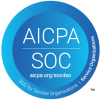As a business owner, understanding the difference between cash flow and revenue is important. While both terms are related to the financial health of a company, they represent different aspects of its operations.
Revenue refers to the total income generated from the sales of goods or services, while cash flow represents the actual movement of money in and out of the business.
Understanding Revenue: Definition and Importance
Revenue is essential for any business. It is the monetary value earned from the sale of products or services to customers. This income contributes to the overall financial health and growth of the company. Revenue can come from various sources, including sales, subscriptions, licensing fees, or any other form of income generated through business operations.
It is a good idea to track revenue accurately to analyze the performance of your business and make informed decisions regarding pricing, marketing, and investment.
Understanding Cash Flow: Definition and Importance
While revenue represents the inflow of money, cash flow is the movement of money in and out of your business. Cash flow takes into account not only the revenue generated but also the expenses incurred and the timing of those transactions. It provides a more accurate picture of the company’s liquidity and ability to pay its obligations.
Positive cash flow means that more money is coming into the business than going out, while negative cash flow indicates a deficit that needs to be addressed promptly. Managing cash flow effectively is crucial for covering day-to-day expenses, paying suppliers, maintaining current inventory, and investing in growth opportunities.
Key Differences Between Cash Flow and Revenue
Although cash flow and revenue are related, they have distinct differences that business owners need to understand. Revenue represents the total income earned, while cash flow reflects the actual movement of money.
Revenue can be recognized even if the payment is not received immediately, while cash flow only considers the money actually received or paid out. For example, if a customer makes a purchase on credit, the revenue is recognized when the sale is made, but the cash flow occurs when the payment is received.
Importance of Managing Cash Flow and Revenue Effectively
Managing cash flow and revenue effectively is essential for the financial success and sustainability of your capital in business. Without proper cash flow management, even a profitable company can face liquidity issues and struggle to meet its financial obligations. Similarly, focusing solely on revenue without considering the actual cash flow can lead to poor financial decisions and cash shortages.
The biggest advantage of monitoring your revenue and cash flow is that you can make more informed decisions on pricing, expenses, investments, and financing options.
The Role of Cash Flow Statements in Financial Analysis
A cash flow statement is a crucial tool for analyzing the cash flow of a business. It provides an overview of the cash inflows and outflows during a specific period, categorizing them into operating, investing, and financing activities.
Through cash flow statement analysis, you can identify trends, pinpoint areas of improvement, and assess the financial health of your business. It helps you understand where the cash is coming from and where it is being spent.
Types of Cash Loans for Businesses
There are various types of cash loans available, each with its own terms and conditions.
Term Loans
Business term loans provide a lump sum amount that is repaid over a fixed period with interest. Such loans are suitable for financing larger investments or covering substantial expenses.
Accounts Receivable (AR) Loan
In an AR loan, the outstanding invoices of a business are used as collateral to secure a loan. This type of loan can bridge the gap between revenue generation and cash flow by providing immediate funds based on the value of outstanding invoices.
Merchant Cash Advances: An Alternative for Cash Flow Management
For Canadian businesses with a high volume of credit or debit card sales, merchant cash advances in Canada can be a viable alternative for managing cash flow. A merchant cash advance is not a loan but rather an advance against future sales. The lender provides a lump sum amount, which is repaid through a percentage of future credit or debit card sales.
This repayment structure allows businesses to repay the advance based on their cash flow, as the repayment amount fluctuates with their sales volume. Merchant cash advances are particularly beneficial for businesses with irregular cash flow patterns or those in need of immediate funds for short-term expenses.
Strategies for Improving Cash Flow and Revenue
Effective cash flow management includes optimizing inventory levels, negotiating favourable payment terms with suppliers, and closely monitoring accounts receivable to ensure timely payment. Revenue can be enhanced through marketing initiatives, expanding product offerings, and exploring new customer segments or markets. It is also important to regularly review and analyze financial statements, track key performance indicators, and seek professional advice when needed.
Managing Cash Flow with Small Business Loans
By securing a business term loan, entrepreneurs can bridge the gap between revenue generation and cash flow needs. Small business loans in Canada provide immediate funds to cover operating expenses, invest in growth opportunities, or manage unforeseen challenges.
As always, carefully assess the loan terms, interest rates, and repayment options to ensure they align with your cash flow projections and financial goals. Additionally, maintaining a good credit history and strong financial management practices will increase your chances of securing favourable loan terms and improving your cash flow position.
Boost Your Cash Flow and Revenue for Financial Success
Understanding the distinction between cash flow and revenue is vital for a modern business. Revenue represents the income generated from sales, while cash flow reflects the movement of money in and out of your business. You can ensure the liquidity, stability, and growth of your company by effectively managing both.









